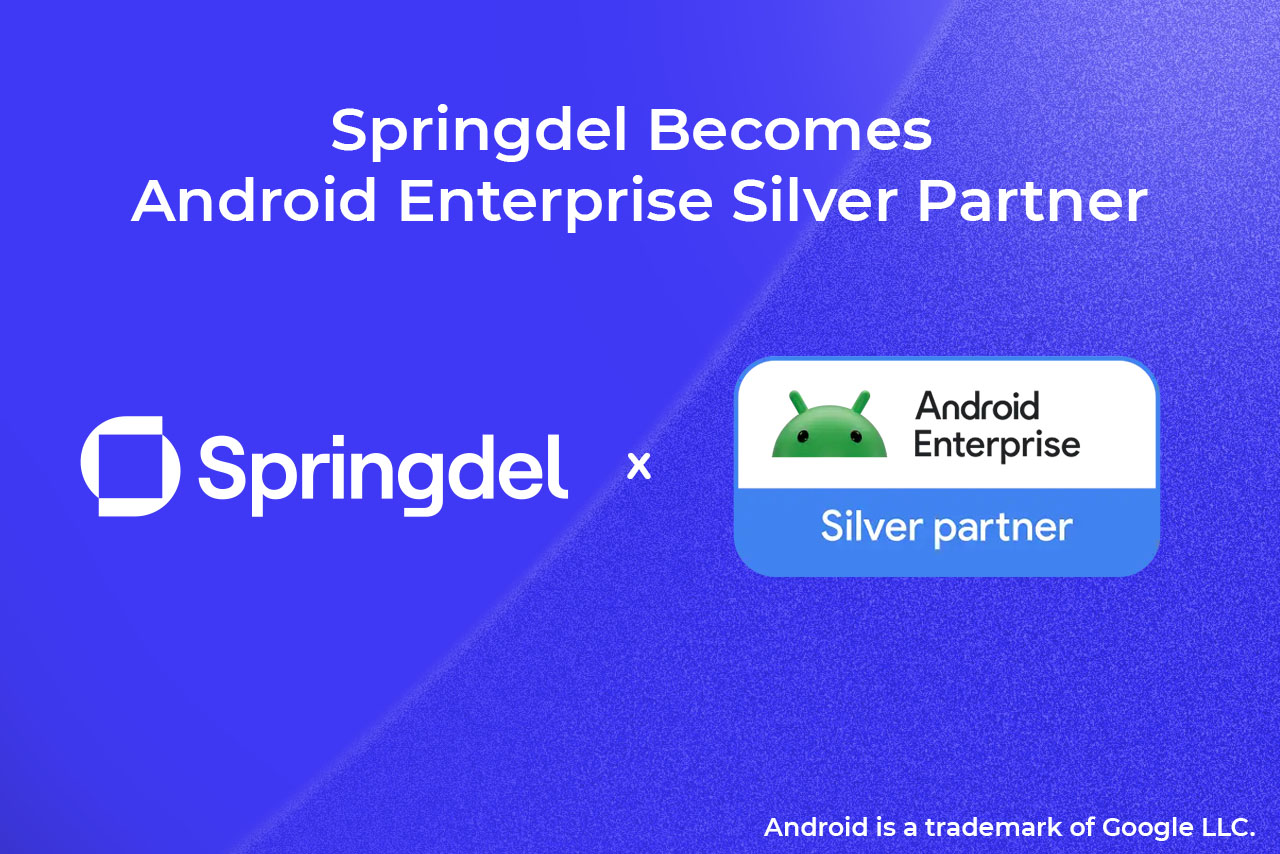Unlocking Android's Full Potential With AOSP

Seeing the enormous potential of handheld devices and data services, Google became interested in the idea of a mobile-first operating system. In 2005 they acquired the Android codebase from Android Inc., and in late 2007 Google unveiled the Android Open Source Project (AOSP) in order to develop a full, production-quality operating system for mobile phones.
The first Android device to make it to market was the 2008 HTC Dream, also branded as T-Mobile's G1. Fast forward to today and there are more Android devices in the wild than any other operating system on the planet, and AOSP is used on the forefront of innovation by millions of developers worldwide to create all sorts of custom applications and services for countless tasks and use cases.
What is AOSP?
You can think of AOSP as the stripped down version of Android. The Android Open Source Project is a special version of Android that comes complete with customizable source code and full documentation. This includes the complete set of tools needed to build an Android system from scratch and a few sample ROMs for developers to test their apps.
Anyone can use it for free. And while the Android you know and love comes with lots of pre-configured features and services, AOSP is a blank canvas that allows developers to create their own unique versions of Android.
Benefits of AOSP:
You can afford it
One of the great things about AOSP is that it's free to use. That means developers who have limited resources can still create amazing things without having to spend lots of money. It also frees you from the binds of Google's certifications and fees. It's like having access to a big toy box full of tools, without having to pay for the privilege.
You can trust it
Another benefit is transparency. Since the code is completely open, you and your team can audit the code for security and efficiency. Most closed systems do not let you see the source code, so you have to take the vendor's word for it. This is often impossible for data-sensitive use cases or industries such as health care where security is particularly important and needs to be auditable and verifiable by trusted third parties.
You can make it your own
The main benefits of the AOSP, however, are its control and flexibility. AOSP gives developers the power to customize Android in different ways. Anyone can copy and modify it for their own use, whether they are teams of developers, designers, or just someone with a great idea.
They can change how the device looks, improve its speed and performance, and even add special features that aren't found in regular Android. It offers endless possibilities to customize everything right down to the source code, without having to get expensive certifications or time-consuming approvals. AOSP lets you build what you want, how you want, without limits.
Tailored use cases
AOSP allows developers to create customized solutions that fit specific needs. Imagine having a phone with apps that are designed just for a particular task at work. With AOSP, developers can make devices that are purpose-built for specific tasks such as digital displayss or scanning tickets for live events. AOSP allows you to turn an ordinary, everyday device into a custom tool that performs the exact task you need it to do.
Tailored environments
AOSP lets developers create their own custom ROM versions of Android. They can add new features, change how the interface looks, and even make it work on different devices. Whole custom environments can transform a generic device into a bonafide swiss army knife with exactly the tools you need.
Tailored solutions
AOSP not only allows for custom solutions, it also helps create custom devices. AOSP works with different types of hardware, which means device manufacturers can create devices that fit their specific needs. They can choose the right parts, like processors and sensors, to make a device that does exactly what they want it to do.
It also helps make devices for special purposes. For example, there can be rugged devices that can withstand tough environments, devices made specifically for industries like food delivery or retail, or even scanning devices for logistics.
It's like having a special tool that is made just for the job you need it to do.
Choice
AOSP's extensibility and interoperability enables hardware vendors to build and patch things like drivers right in the platform.
This capability is one of the reasons Android took off and Microsoft fell flat when it came to mobile devices. As the mobile space and ARM development took off, the rate of innovation meant that it was impossible to develop a software stack that didn't allow for hardware contribution. Apple achieved this with iOS because it controlled software and hardware. Android achieved this through its open source platforms, including AOSP.
Compared to other open source projects, like the Linux project, AOSP is more feature complete than a base Linux kernel in most cases. AOSP uses the Linux kernel, but includes a rich developer community with a powerful IDE to make graphical application development easier.
Additionally, though AOSP itself doesn’t include the Google Play store, it can support and run standard Android application packages ( .apk). For these reasons, many industrial, purpose-built device manufacturers will choose AOSP over a Linux distribution when the device includes UI components.
Some things to keep in mind
The alternative is costly.
To run through the GMS certification requires full compliance with the Google compatibility test suite (CTS) (https://source.android.com/docs/compatibility/cts). And while partners set up to run this and get Google accreditation can do so, the amount of time to run, debug, apply, and communicate with Google Engineers takes time and man hours.
The compatibility itself is designed for consumer devices in mind. Certain manufacturers may need or may develop devices with very specific use cases in mind. For example the requirements will state : "[7.6.1/H-8-1] The memory available to the kernel and userspace MUST be at least 1824MB if the default display uses framebuffer resolutions up to QHD (e.g. QWXGA)." This dictates a minimum available RAM level based on a display resolution.
This is good for a consistent experience for end-users and 3rd-party developers, but may not be applicable for a device being used in an industrial capacity. https://source.android.com/docs/compatibility/13/android-13-cdd
AOSP is open, but not necessarily convenient
It is a system that is made for developers so it doesn’t ship with all the features, exclusives or APIs that come with Google Play services or common consumer services.
Android and AOSP are not the same
Android is the OS (likely) running on your Android phone. AOSP is the open source project that gave rise to it. It won't give you all the familiar bells and whistles out of the box, but it gives you endless control and flexibility to build something new and better.
Some links and technicals
Changes to the AOSP project are managed in Gerrit. https://android-review.googlesource.com/q/status:open+-is:wip There is also a fork of the project with a lot of active contributions on GitHub. https://github.com/aosp-mirror
AOSP vs GMS
AOSP is the base of any Android deployment and makes the platform much more open and customization. This is also the case for a Google Managed Service (GMS) device as well. In fact, most commercial devices have the GMS plugins and services baked into the software. Where this is not true is in the Chinese market, and for several appliances - barcode readers, fitness trackers, kiosk displays, and digital displays to name a few.
AOSP: Where customization and affordability come together
Springmatic supports devices running AOSP or GMS in order to provide users with the maximum amount of flexibility in their solution. Device management should be device agnostic and maximize choice and flexibility. Are you an AOSP device manufacturer? Contact us here <email form>. We love hearing from manufacturers to ensure support and collaboration.
With AOSP, the future of technology is in the hands of creative minds who can make smart devices and other interactive devices even more powerful. It opens up a world full of possibilities, where customization, affordability, and security come together. If you can dream it, AOSP can help you build it, and Springmatic can help you run it securely at scale.
Supporting AOSP Devices
With so many advantages, its easy to see why device manufacturers of industrial devices will choose AOSP overloading a device down with the entire GMS suite of applications. Likewise, it is important that your MDM can also support mixed environments of both GMS and pure AOSP or non0-GMS devices. Surprisingly, many MDMs on the market simply use the base Management APIs that Google provides to develop their management platform. For certain markets and industries, that could be fine, certainly can be limiting in the choice of devices.
To ensure maximum flexibility and support, choose an MDM that is capable of both GMS and AOSP support. More and more purpose-built devices are adopting ARM-based platforms, abandoning legacy x86 operating systems for ARM-focused versions, of which Android is the market leader in both GMS and non-GMS variants.
Source: https://gs.statcounter.com/os-market-share

